Keyword Research: How to Search for Keywords That Will Help Your Content Rank
Any good content writer knows the importance of performing effective keyword research for content to rank high in Google’s Search Engine Results Pages. Read on to find out more.

Is Keyword Research An Important SEO Factor?
Understand Search Intent
Every time a user enters a phrase or a word in Google’s search engine to search for something, they have a search intent to seek out certain information. They are looking for answers to questions or solutions to problems.
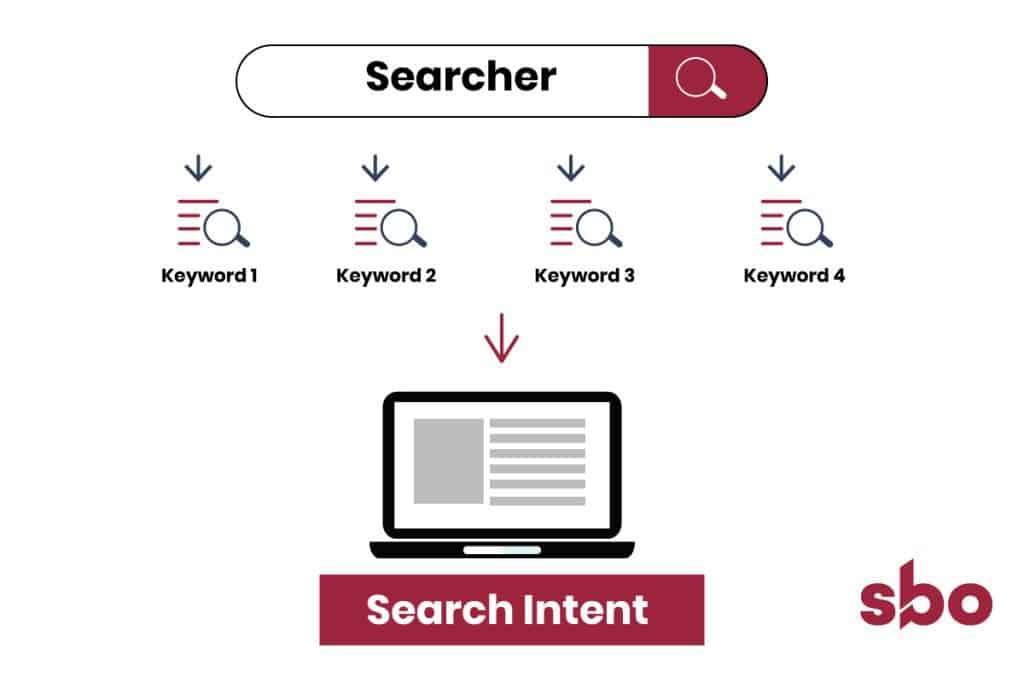
It is important to take note that different people will use different words or phrases to search for something even if they have the same search intent.
For example, for seeking out professional SEO services, one can search for “SEO agency” or one can search for “SEO services”. Both search phrases have the same intent, which is to find a good company providing SEO services.
Indeed, keyword research, which is the process of finding out these commonly used words and phrases by people for certain search intent, is the first crucial step of SEO.
Keyword research is particularly vital because it lays the foundation for the remaining steps of SEO.
If done right, it can frame the right direction for you to achieve your ultimate goal of increasing organic visibility through optimised content around those search terms and ranking highly for those terms in search engines.
If done wrong, it can undermine your effort in trying to increase organic presence through content. You will be investing efforts to produce a piece of content with a topic that will be hard to attract organic traffic because no one is searching for it.
Read on to find out how to effectively perform keyword research to avoid your website becoming part of that 90.88% of webpages which receive absolutely no organic search traffic from Google.
First Step Of Understanding Keyword Research: What Are Keywords?
From the perspective of websites’ owners, keywords are words or phrases found inside your content that represents ideas and topics defining what your content is about.
Google has bots crawling through the websites to form an understanding and a perspective of the content. Keywords within the content will help Google to understand what type of search intent it will fulfill.
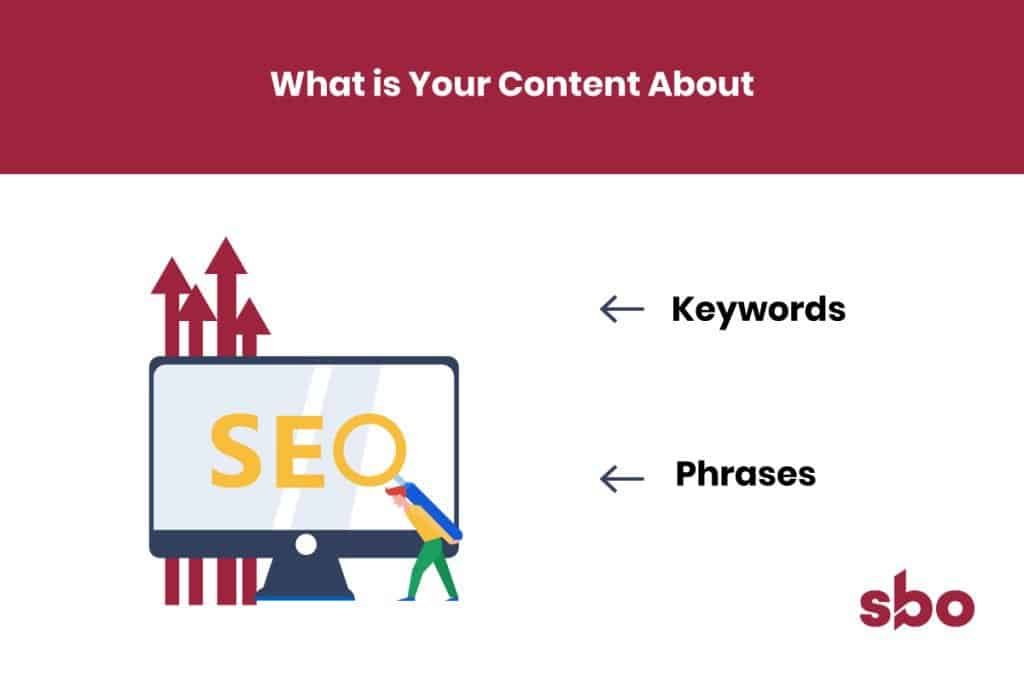
From the perspective of search engine users, keywords refer to any search term, whether they are a single word or a phrase, entered on Google or any other search engine to fulfill certain search intent.
For example, if you are looking for a business loan when you search for “company loan application” or “short term business loan” on the search engine, they can be considered as 2 different search keywords but with the same search intent.
What makes keyword research so important is that it scopes out the correct boundaries that the content needs to focus on.
Proper keyword research will help:
- To produce a content topic that has organic traffic potential
- To help produce content with the correct keywords that fulfill a single search intent
For business owners, this represents the identification of a battlefield that you choose to fight in so that you can stand a chance in winning against your competitors and bring organic traffic over to your website instead of theirs.
In order to do so, you will need to do proper keyword research which will help you to find the appropriate keywords to target.
“You’ve got to pick your battles, Pen, but then fight to the death for the ones that matter.
Tiffany Schmidt, Hold Me Like a Breath“
Keyword Research Step #1: Identify Search Intent

Before going more in-depth into keyword research, first as the website owner, you should first identify a unique search intent you want to address and you have never tried to address before.
You do not have to think too hard, just make use of your business and common sense to come out with a search intent you want your content to address.
You want to target people with the search intent to find solutions for their acne scars.
Notice that at this stage, you have not identified any keyword.
You just know that you want to help people with an acne scar.
Keyword Research Step #2: Brainstorm For Keywords
Now that you have identified a search intent, it is always a good idea to first put yourself in the shoes of your target audience and brainstorm possible keywords that users interested in the search intent would key into Google’s search engine.
Indeed, brainstorming is one of the most crucial steps in conducting keyword research whose importance is often understated.
We will now use the previous example of targeting the search intent in looking for solutions to cure acne scars.
You will naturally gravitate towards the short-tail keywords like “acne scars”, but that will clearly not be of much use in a crowded field where there are over 50,700,000 Google search results for “acne scar”!

Well, here is a simple 2-step procedure that you should follow during brainstorming:
Start with seed keywords, or primary keywords, that can be expanded later on into a list. In this case, some possible seed keywords might be “acne scars” and “pimple scars”.
With the seed keywords, think of longer tail keywords (basically longer phrases) that can fulfill the same search intent too, like “best acne scar treatments”, “how to remove pimple scars” and “natural treatment for acne scars”.
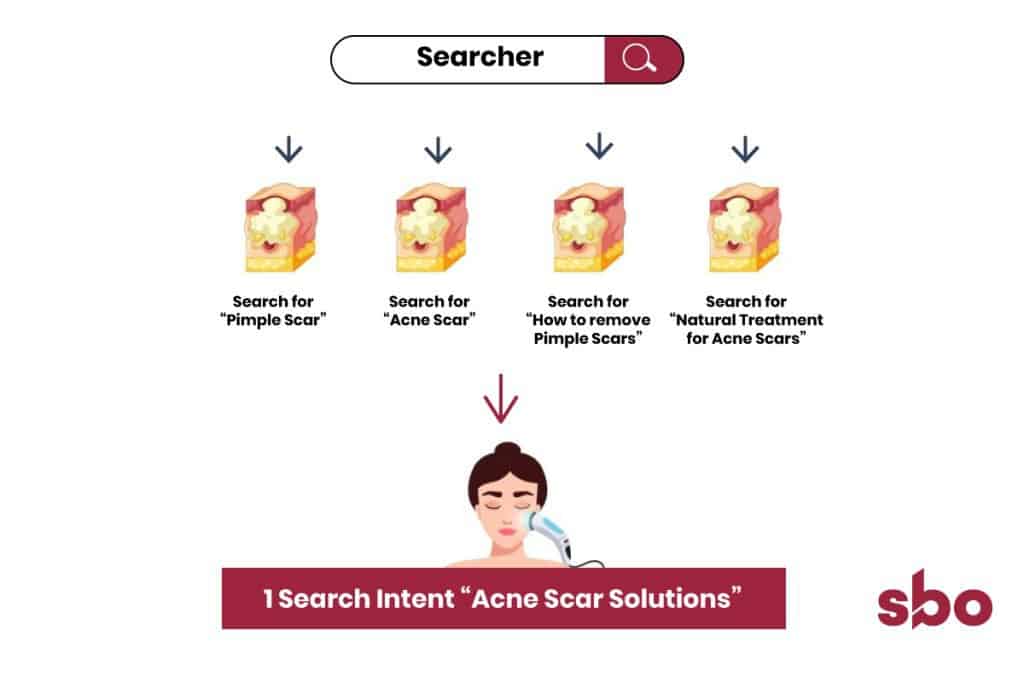
People who use these keywords can be safely assumed to have the same search intent as the one who searches for acne scars.
At this stage, the more you have an understanding of your target audience, the more effective you can be in coming out with longer tail keywords.
Keyword Research Step #3: Verify The Organic Potential For The List Of Keywords You Had Identified
Now that you have come up with a hypothetical list of keywords that you think people will search for to fulfill certain search intent, it is time to verify this list of keywords with specialized software to confirm the organic traffic potential.
Basically, it is to address “if people are really using such keywords to search or are they using other phrases or words to search”.
Remember, everyone is different. What is obvious and commonsensical to me and you, may not be the same for other people.
We can only verify this and come to a sound conclusion when we have access to tools that can draw out search statistics from Google to provide the relevant information.
The information that we need to know are:
- How many people are searching for this phrase every month
- Are there websites bidding for this phrase
- Are there other phrases that we have not thought of
At Thinking Notes, we usually use 2 tools to help us with this step. These 2 tools are Mangools Keywords Finder and SemRush Keyword Magic Tool.
Keyword Research With Mangools Keywords Finder
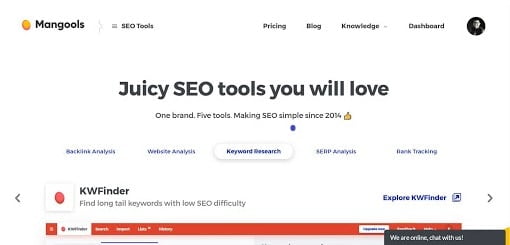
Granted, given the vast number of possible keywords out there (not even mentioning their possible permutations), trying to refine your list of keywords can be challenging.
About Mangools
Mangools has a family of SASS applications meant for helping people with SEO works, such as Backlink Research, SERP Tracking, Keyword Research, and Website Analysis.
Mangools is not as powerful as other mature SEO applications like SEMrush, AhRefs, and MOZ.
However, Mangools has a very user-friendly interface and users will find the navigation and experience of using the tools much less complicated and intuitive.
This is the main reason why we are using Mangools even when we already have an active subscription to SEMrush.
It is also one of the most affordable SEO tools available in the market.
Accessing Mangools’ KWFinder for Keyword Research
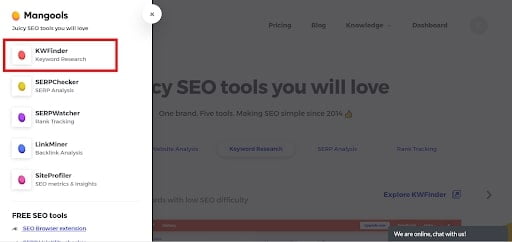
We will demonstrate keyword research using Mangool’s KWFinder application here.
The application shortcut can be accessed via the “SEO Tools” navigation bar.
How to Use Mangools for Keyword Research
Now, it’s as easy as inputting your list of pre-identified keywords into the search bar to view the relevant search statistics for each of your keywords.
Look at Search Traffic and CPC
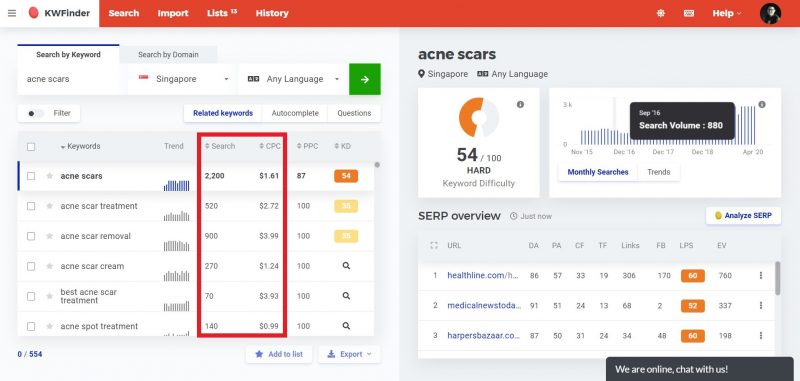
At this stage, you can also look at the search results to determine if there are other search phrases you have not thought of in your earlier brainstorming session and these phrases are highly relevant to your targeted search intent.
While there are no hard and fast rules to follow, a general rule of thumb is to select keywords that show high search traffic.
Ideally, there should also be results showing people bidding for these keywords (CPC) as it demonstrates that the keyword has commercial potential.
Keywords that do not have high search traffic, you can make the decision to filter them out and not to include them under your final list of targeted keywords.
Look at Keyword Difficulty
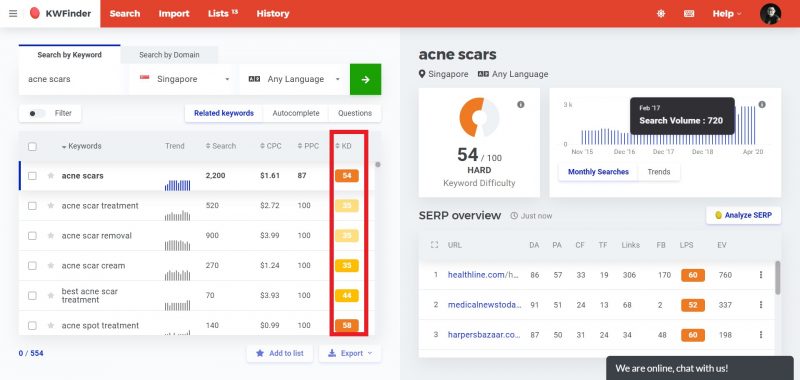
You may have noticed a KD column in the analysis result, it stands for Keyword Difficulty.
Keyword Difficulty is a Mangools derived estimate on how difficult it would be to rank well in organic search results for a particular keyword — the higher the number, the harder it would be to achieve high rankings.
You may just use the KD as reference information only, for you to decide how much effort you need to put in to win this SEO battle.
However, it does not mean that you should only target keywords with low KD.
Good keywords will naturally have higher KD as more people are competing over it. Unless you are deploying a blue ocean strategy and want to fight to dominate less popular search intents.
Look at Search Trend
Search trends indicate the popularity of the search phrase over the years. Ideally, you should target keywords with a stable search trend or a rising search trend. A dropping search trend will mean that the search phrase may not be relevant anymore in the future and the content you created may have a certain lifespan.
The screenshot below, for instance, shows that the number of searches for “business loan” has been on the rise over the last couple of years, suggesting a growing market for you to capitalise on.
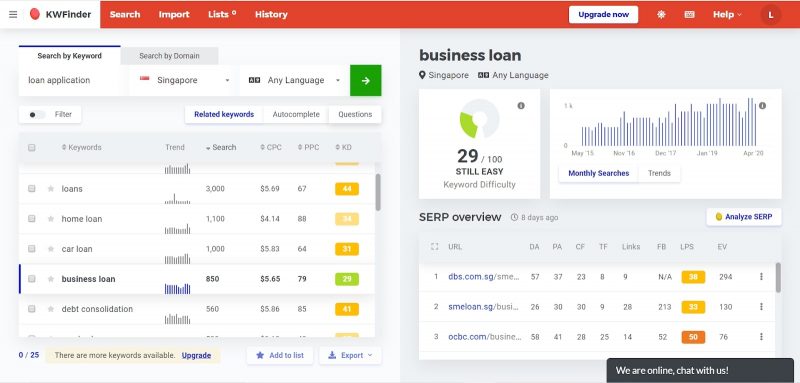
Keyword Research Final Step #4: Content Generation Or Content Optimisation
Once you have completed filtering and finalized your list of target keywords, you need to assess the validity of creating new content. You need to first determine whether there is prior existing content on your website that targets the same intent and the same list of keywords.
If you have existing content, you may want to consider reoptimizing the content or delete the content. If you choose to delete the content or you do not have existing content, you can proceed to generate the content based on the final list of keywords.
If other content is already ranking for some keywords
If you already have some content ranking for some keywords by accident without your conscious effort in trying to rank for them, you will have to analyze why the contents are ranking in the first place.
When you have figured out the reason behind this, take them out of the existing content and implement them in your new content.
One common issue is that the same keyword phrase can be found in the old content; thus you need to rephrase to make the old content harder to rank for it.
Bonus Content: Keyword Research Using SEMrush
SEMrush is one of the most established and reputable SEO tools in the industry. Mention professional SEO tool to any SEO professional, and SEMrush will likely be one of the first tools that come into mind.
What makes SEMrush so powerful is the comprehensiveness they have built into their system. You are able to do effective competitors’ analysis, keywords’ analysis, site audit, keywords’ tracking, white label reporting and so much more.
If you are an SEO professional, SEMrush is a tool you need to have right now. However, if you are just a business owner trying to grow your organic traffic, SEMrush may be an overkill for your needs.

How to use SEMrush for Keyword Research
For the purpose of keyword research, we will only be demonstrating how to make use of SEMrush to identify what keywords to target.
Besides the usual keywords’ analysis tool which is similar to Mangool, SEMrush also has a Competitor Analysis tool and Topic Research tool that will help you to identify the organic potential of various keywords.
Keyword Research with SEMrush Competitor Analysis
Usually, we start off keyword research knowing what search intent we are targeting.
However, when we use SEMrush competitor analysis tool, we basically want to understand our competitors and what keywords are they ranking for and what keywords are bringing them organic traffic. Using this tool will help you to understand what keywords to target and also what search intents the audience has.
Thus, it is fine to perform this without a search intent in mind.
All you need to do is to access the Domain Analytics panel and locate the search bar located at the top of your dashboard. Next, enter the domain URL of your competitor to retrieve the results.
Ideally, you should analyze the competitor whom you know is doing very well in SEO. You should not analyze competitors who are not doing well in SEO even though they may be very successful.

You will be brought to the result page, which will essentially provide you with a snapshot of how your competitor’s website is performing.
There are two important metrics here for you to take note: the website’s Authority Score and the Organic Search Traffic Score — remember, you want to be learning from competitors who are at the top of their SEO game.
This is for you to determine if it is worth your time to study from this competitor.

Scroll down, and you will stumble upon the most valuable piece of information that you were trying to look for — the list of top keywords that bring your competitor organic traffic.
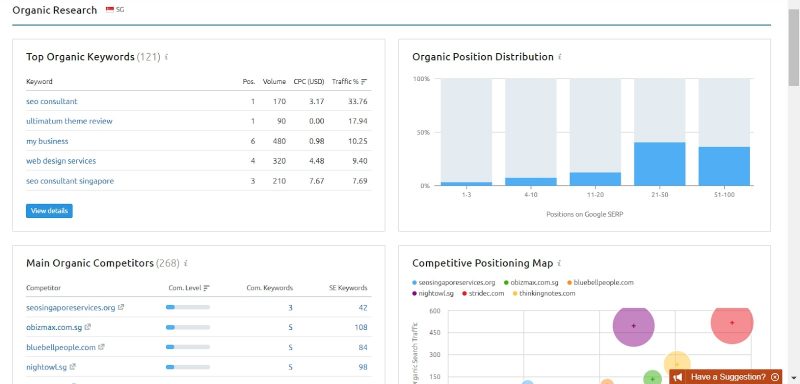
Following this, click on “View details” to view the comprehensive list of keywords used by your competitor.
Not only will you get to find out what are the exact keywords that your competitor is using, but you will also be able to discover the percentage of search traffic to your competitor’s website that each keyword accounts for, as well as the average search volume and Click-Per-Cost (CPC) incurred by your competitor for each of these keywords!
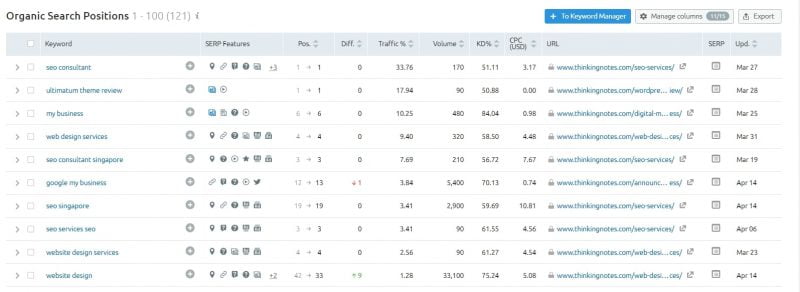
Armed with the above information, you will then be in a better position to decide which keywords and which search intents you should target for your own website.
Get Ideas for Your Content With SEMrush’s Topic Research Feature
If you are struggling with a writer’s block, you might also want to check out SEMrush’s Topic Research feature.
The functionality allows you to enter a topic that you would like to craft your content around so that you will be able to receive information and ideas regarding the topic.
This is very useful for finding out new search intents.
This will hopefully help you to create powerful content that resonates with your target audience.

Let’s say, you keyed in the topic “SEO” into the search bar, limiting the proposed topic ideas to the country of Singapore.
With just one click, you will be able to view a comprehensive mind map containing the various sub-topics under “SEO”, from “targeted traffic” to “mobile-friendly text”.
On the display pane on the right, you will be able to view a list of headlines relevant to your topic that have been sourced from the Web, such as “How to Use XML Sitemaps to Boost SEO”.
Additionally, you will also be able to view a list of questions pertaining to your topic, such as “What is the importance of XML sitemap in SEO?”
With this information in hand, you will be able to identify search intents that you would not have thought of in the first place. You will then be able to craft better content aimed at addressing issues that will attract organic traffic.
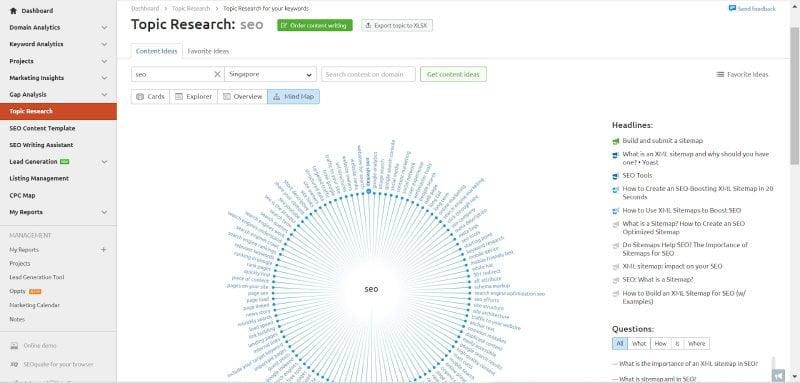
Identify more keywords with SEMrush’s SEO Content Template
SEMrush has a Content Template functionality for you to find out how to create SEO-friendly content based on its analysis of your rivals’ webpages.

Let’s say, you keyed in the target keyword “SEO consultant”, limiting your search queries to the country of Singapore (Desktop).
SEMrush then carries out an analysis based on your Google top 10 rivals, before proposing key recommendations for semantically related words, backlinks, readability, and text length.
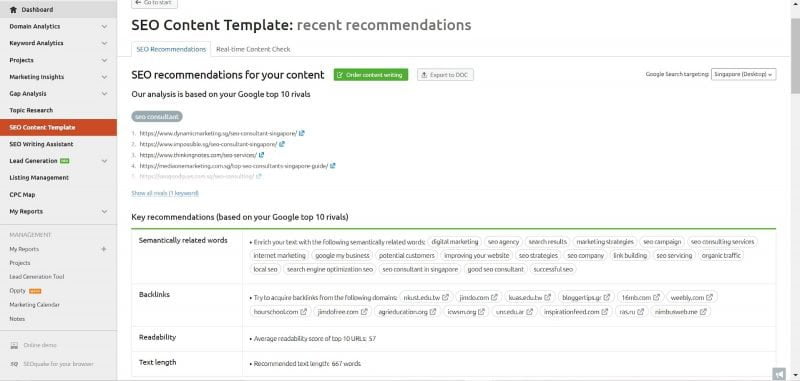
These recommendations are critical in helping you to structure your content, as they are based on tried-and-tested strategies utilised by your top competitors.
You will also be able to identify semantically related words you might want to enrich your content with.
For example, the tool has proposed to insert words like internet marketing, google my business, potential customers, etc, phrases that will be difficult for you to think of if you do not have access to such a comparison and analysis tool.
Bonus Content: How To Identify More Search Intents

Search intents are usually derived based on your knowledge and understanding of the industry and the audience. When you have the experience and empathy, you will naturally know what the information needs of these audiences, thus you will be able to come up with strong and valid search intents.
The following tips will help you to expand your awareness and add one more dimension of thought when you are deciding which search intent to target.
Who Are You Really Targeting From the Perspective of the Buyer Journey
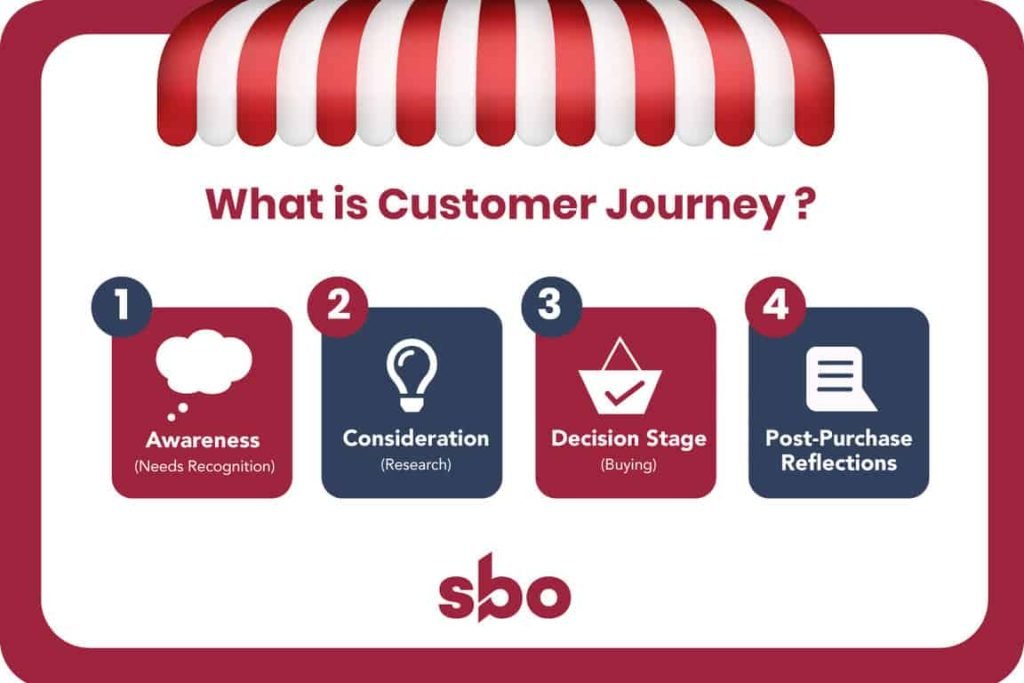
It is important for you to understand what a buyer journey is and which type of audience you are targeting.
If you are targeting an audience who are already aware and ready to buy your services/products, you will need to create content that provides the search intent to help your audience decide how to make a well-informed purchase decision.
If you are targeting an audience who are not aware at all, you will need to create content that addresses the search intent to help your audience to realize their issues and the possible solutions.
If you are keen, read up more on the buyer journey.
Do Not Forget Shoulder Niches
It is also important to understand what shoulder niches are.
Shoulder niches are topics that address the search intents of your targeted audience without being 100% relevant to the solutions you are providing.
For example, for the aesthetic business, I can target topics such as self-confidence issues or grooming tips.
This information is still relevant to my targeted audience (who are motivated in making themselves look better) but they are not really relevant to my business of providing aesthetic services.
Understand Types of Search Queries
As you are in the process of brainstorming for keywords, you should also take note of the following types of search queries and align your keywords with them:
- Navigational Search
A search query entered with the intent of finding a particular website or webpage e.g. typing the word “Thinking Notes” into Google’s search bar; the user’s intent is to simply find our website.
It will be hard for you to target a navigational search and try to grab the organic traffic away from your competitors.
If you are keen to embark on this path, you can do some sort of a review article, helping your customers to make an informed decision to purchase something that is more suitable for them.
It will be ideal if this kind of post can be published on a brand-neutral platform like ours. - Informational Search
A search query entered with the intent of finding out particular information that is of interest to the user e.g. “how to borrow money in Singapore from a licensed moneylender”.
To target informational search queries, you may wish to consider incorporating high-quality SEO content that genuinely answers and addresses the search intention of the audience. - Transactional Search
A search query entered with the intent of completing a purchase decision. These audiences are a valuable type of users who are ready to buy.
To target transactional search queries, a good tip would be to make use of Pay-Per-Click (PPC) advertisements using Google Adwords, as these are exactly the kinds of queries that are the most likely to deliver the highest Returns on Investment (ROI) on paid search.
To target this audience effectively, it will be good to invest in a landing page that is optimized for conversion and also organic ranking.
Out of the three types of search queries, transactional search queries are the most important to target because the person performing the search would likely be at the business end of the conversion funnel.
Bonus Content: Difference Between Short Tail Keywords And Long Tail Keywords
You should understand that there are two different types of keywords that users would input into the search engine depending on which stage of the conversion funnel they are at:
- Short Tail Keywords: General phrases comprising one or two words e.g. “business loan”.
- Long Tail Keywords: More specific phrases comprising three to five words (or even more) e.g. “short-term business loan”.
When looking for keyword suggestions, we are often enticed to go after short-tail keywords since they usually possess the most search traffic and have the most potential.
However, this also means that there is a huge volume of competition from competing sites that are targeting the same short-tail keywords.
From our experience, it will be a better strategy to first target long-tail keywords for improving search rankings due to lower competition.
When the domain authority of the website as a whole has increased, shift the focus to short-tail keywords.
Conclusion
And that’s it for our guide to keyword research!
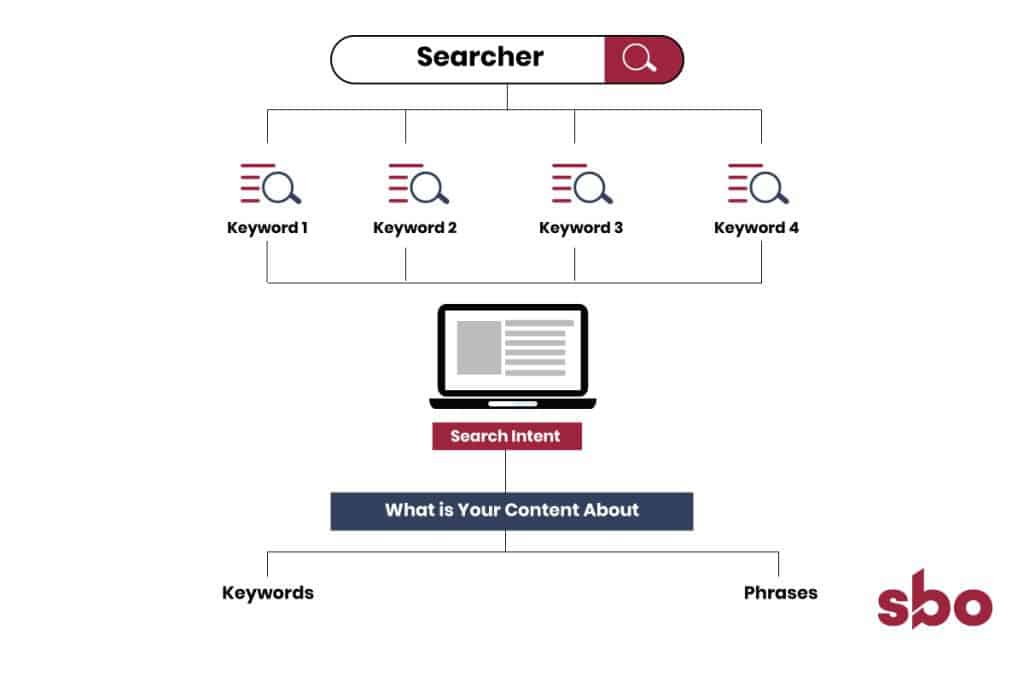
Understandably, navigating through all of the aforementioned steps to effectively perform keyword research to improve the ranking of your content in Google’s SERP can be a daunting task, especially for complete beginners to SEO.
Explore More Content
Table of Content

